Your Lipstick Plant Isn’t Blooming? Let’s Fix That.
I’ll never forget my first real gig at a commercial greenhouse. I was handed a small collection of sad, neglected lipstick plants. They were all legs, with pale leaves, and probably hadn’t seen a flower in ages. Nursing those plants back to life taught me way more than any book ever could. It showed me just how tough these plants are, but also how particular they can be.
So many people grab a lipstick plant, charmed by its wild, vibrant flowers, only to get frustrated when it sulks in a corner and refuses to bloom again. But honestly, the secret isn’t some complicated horticultural magic. It’s all about understanding where these plants come from and making them feel at home.
This isn’t a set-it-and-forget-it kind of plant; it’s more like a relationship. You have to watch it and learn its language. In this guide, I’m going to walk you through everything I’ve learned from years of growing, propagating, and, yes, rescuing these beauties. This is the hands-on, real-world stuff, not just theory.
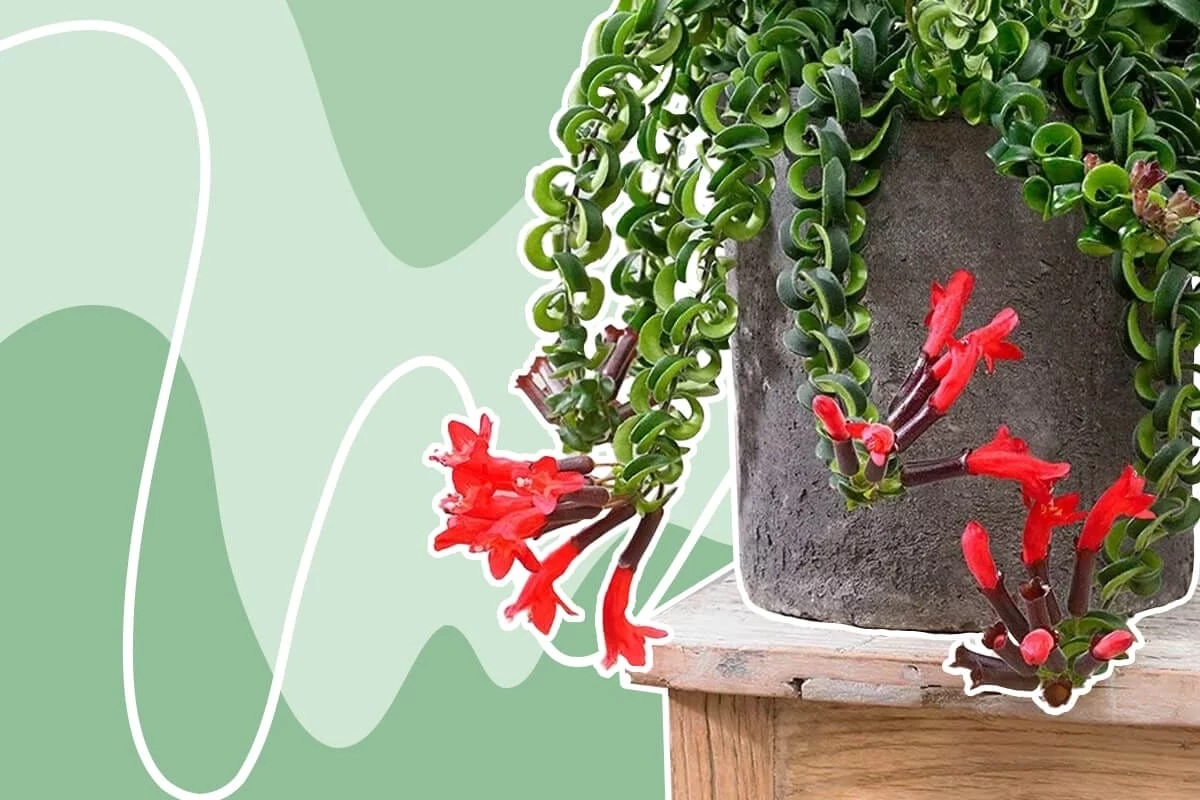
Quick Win: The Easiest Thing You Can Do Right Now
Before we dive in, go look at your plant. Is it sitting in a saucer with water in it? Go ahead and dump that out. Seriously. You just saved your plant from the number one killer: root rot. See? You’re already a better plant parent.
First, You Have to Understand Your Plant
Here’s the most important thing you need to know: the lipstick plant is an epiphyte. In its native rainforest home, it doesn’t grow in soil on the ground. It latches onto tree bark, dangling beneath the canopy. This one fact tells you almost everything you need to know about its care.
Think about it. As an epiphyte, its roots aren’t built for dense, soggy dirt. They crave air, moisture, and something to cling to. It lives under a thick canopy of trees, so it gets dappled, bright light, not harsh, direct sun. Rain washes over its roots frequently, but they never, ever sit in a puddle. If you can mimic these conditions, your lipstick plant will thrive.
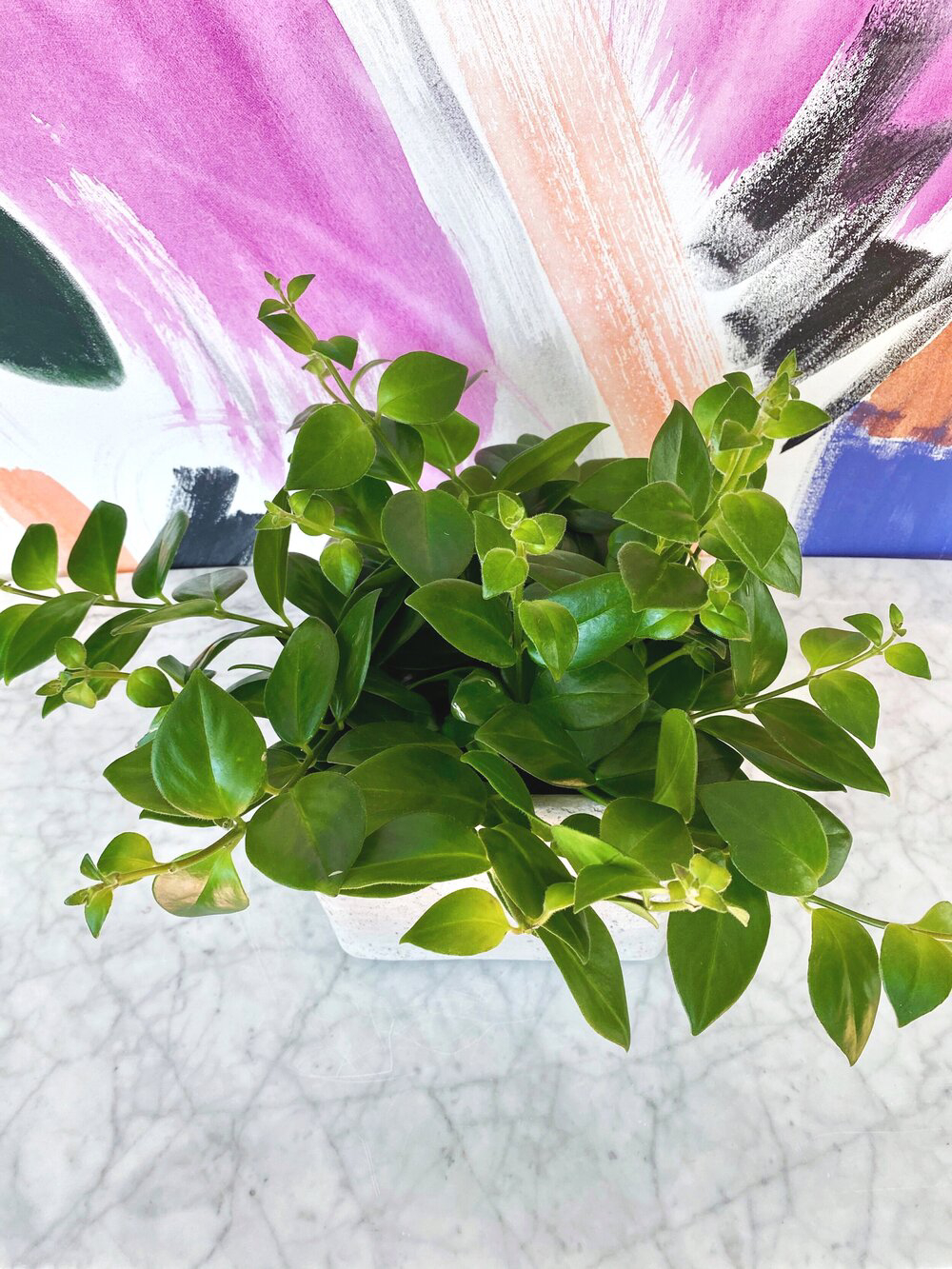
Even its looks are all about survival. Those thick, waxy leaves? They’re designed to hold onto water between rain showers. The trailing stems are perfect for cascading down from a tree branch, reaching for a little more light. And the famous flower… that
Galerie d’inspiration
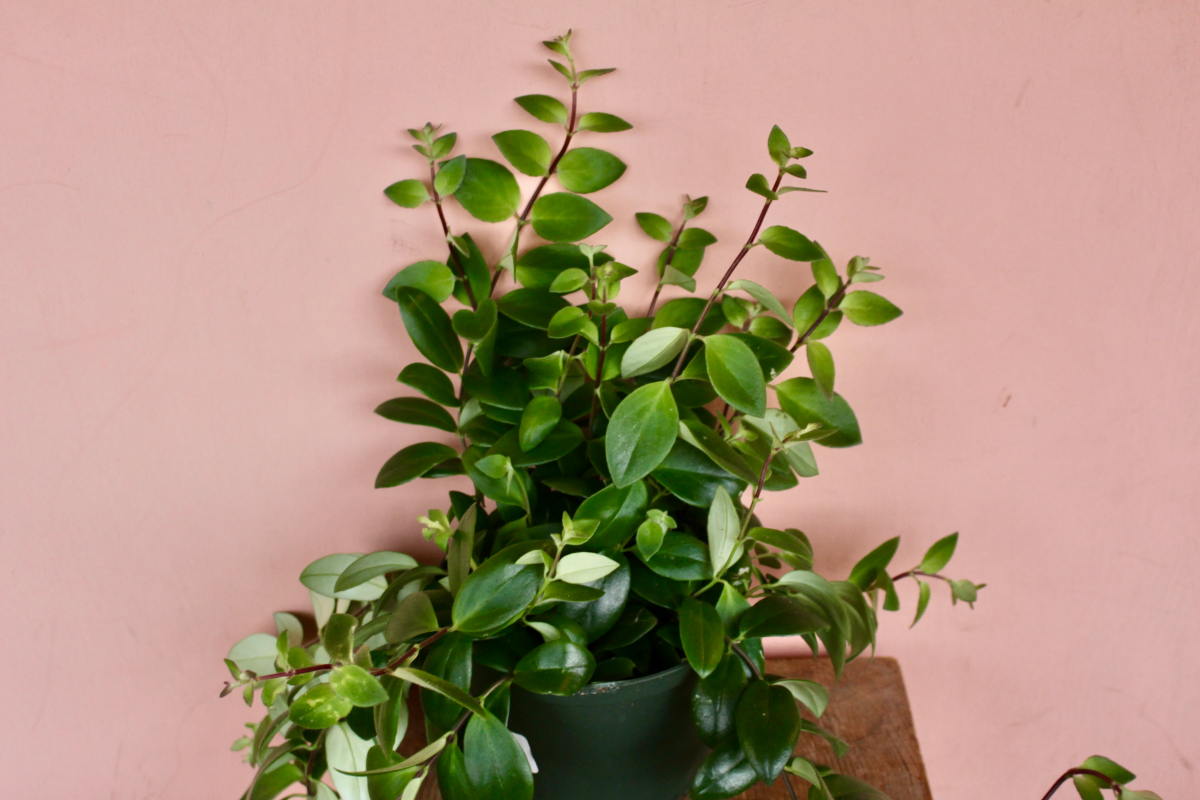
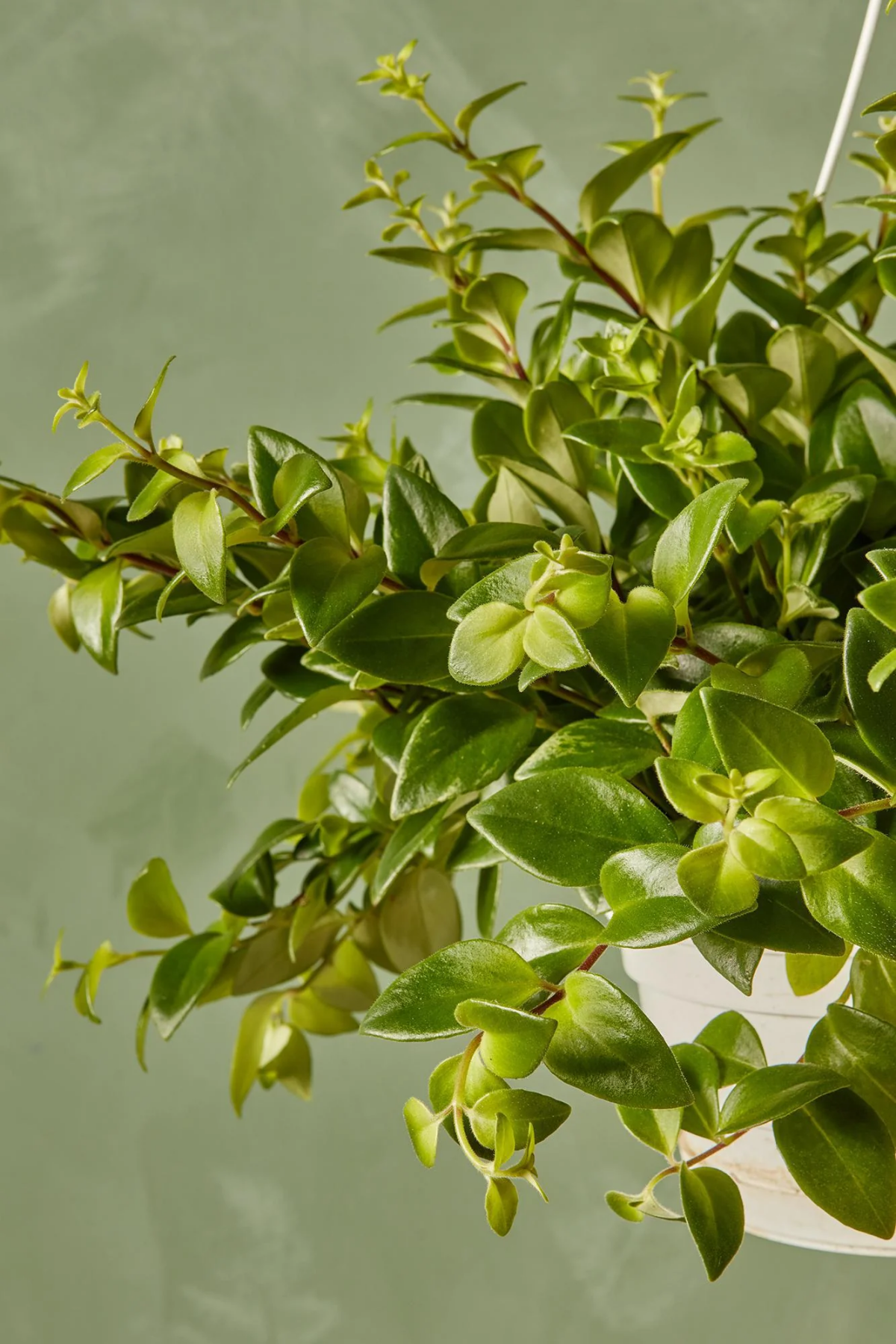
Don’t be shy with the pruning shears! After a blooming cycle finishes, trim the trailing stems back by about a third. This not only keeps the plant looking full and bushy instead of leggy, but it also actively encourages the new growth where next season’s flowers will form. More branches mean more potential for those gorgeous red flowers.

There are over 150 species in the Aeschynanthus genus.
While the classic red-flowered Aeschynanthus radicans is the most famous, exploring other varieties can be a delight. Look for the ‘Black Pagoda’ with its mottled leaves and yellow-orange flowers, or the ‘Rasta’ with its uniquely curled, dense foliage for a completely different textural look in your home.
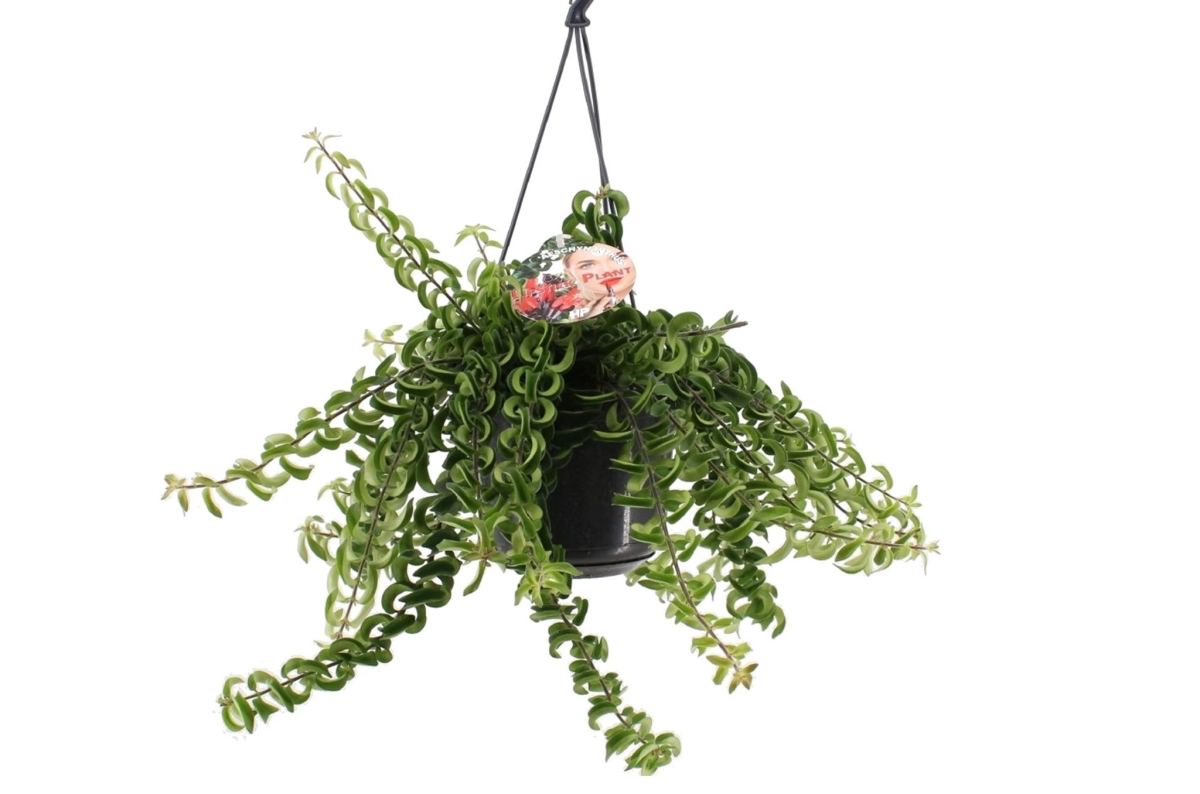
Is the Lipstick Plant safe for my pets?
Great news for animal lovers! According to the ASPCA (American Society for the Prevention of Cruelty to Animals), the Lipstick Plant (Aeschynanthus radicans) is non-toxic to cats, dogs, and horses. This makes it a fantastic, worry-free choice for adding a pop of trailing greenery and vibrant color to a home shared with furry friends.
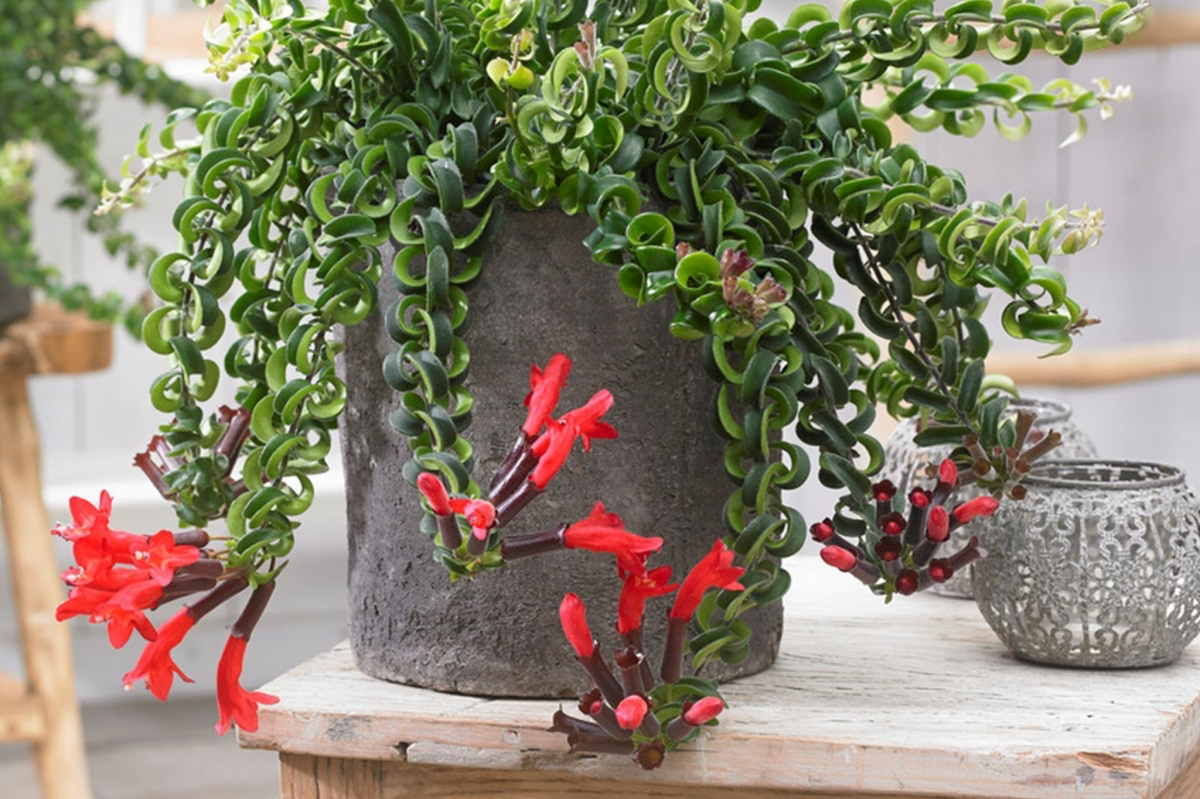
- Vibrant, consistent blooms.
- Lush, deep green foliage.
- Strong, resilient stems.
The secret? A brief winter rest. By slightly reducing watering and moving your plant to a spot that’s a bit cooler (around 60-65°F / 15-18°C) for 4-6 weeks in late fall or early winter, you mimic its natural dormancy period. This signals the plant to conserve energy and prepare for a spectacular burst of flowering in the spring.
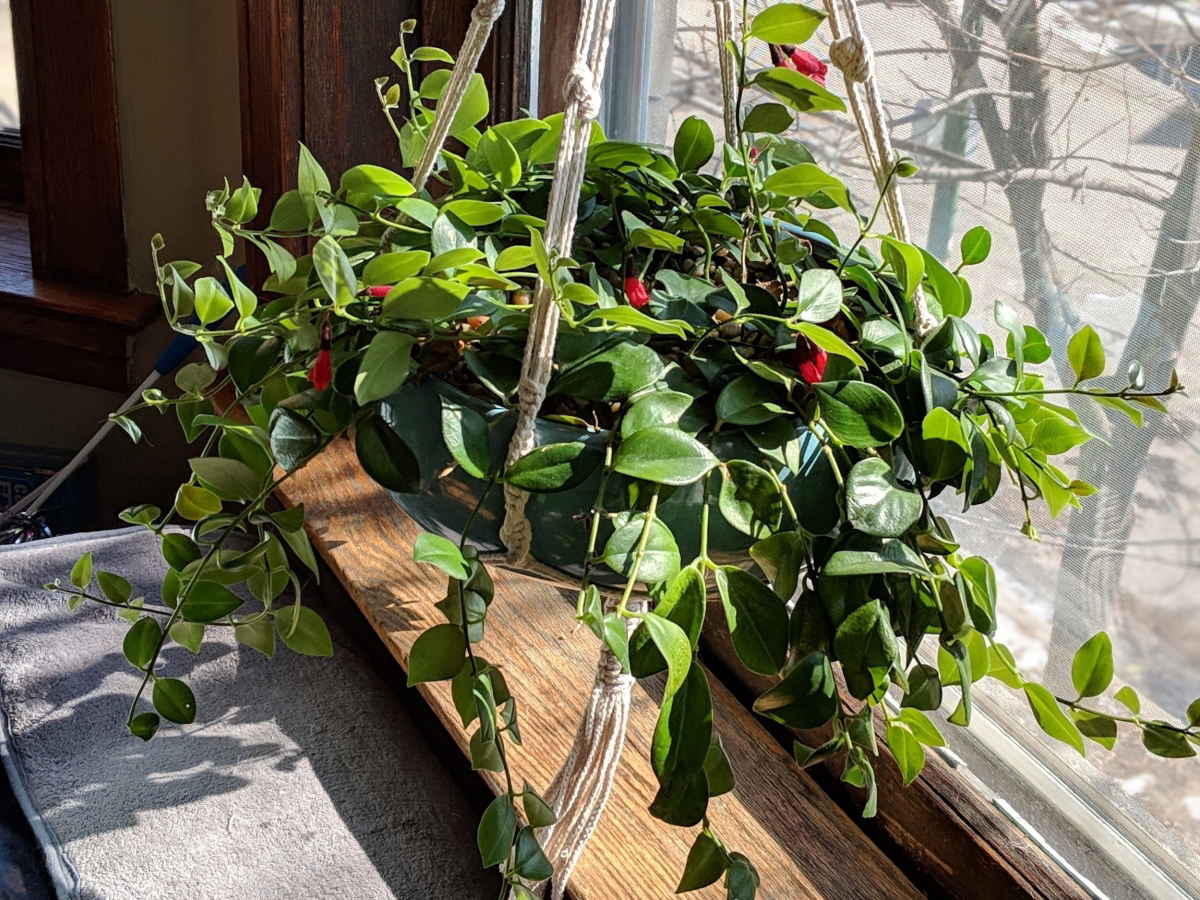
Important point: Your potting mix is its home, not just its food source. As an epiphyte, a lipstick plant will suffocate in dense, standard potting soil. Create an airy mix yourself by combining one part high-quality indoor potting soil, one part perlite, and one part orchid bark. Brands like Espoma or FoxFarm Ocean Forest provide a great base to start with.
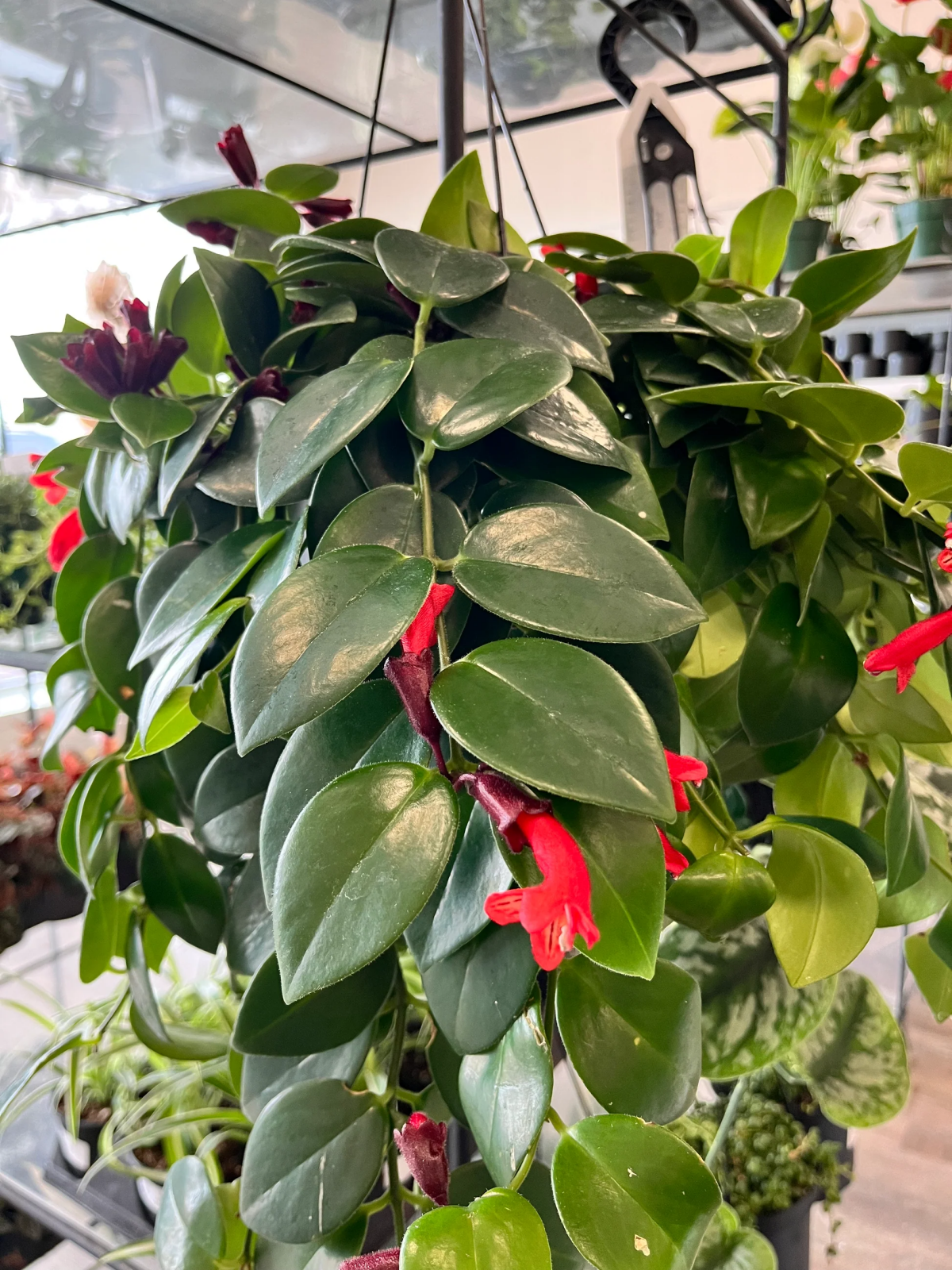
- Yellowing Leaves: Check for overwatering first, but if the soil is fine, it could be a lack of nutrients. Time to fertilize.
- Brown, Crispy Leaf Edges: The air is too dry. Your plant is craving more humidity. Try misting or a pebble tray.
- Pale, Washed-Out Leaves: It’s getting too much direct sunlight. Move it to a spot with bright, indirect light.
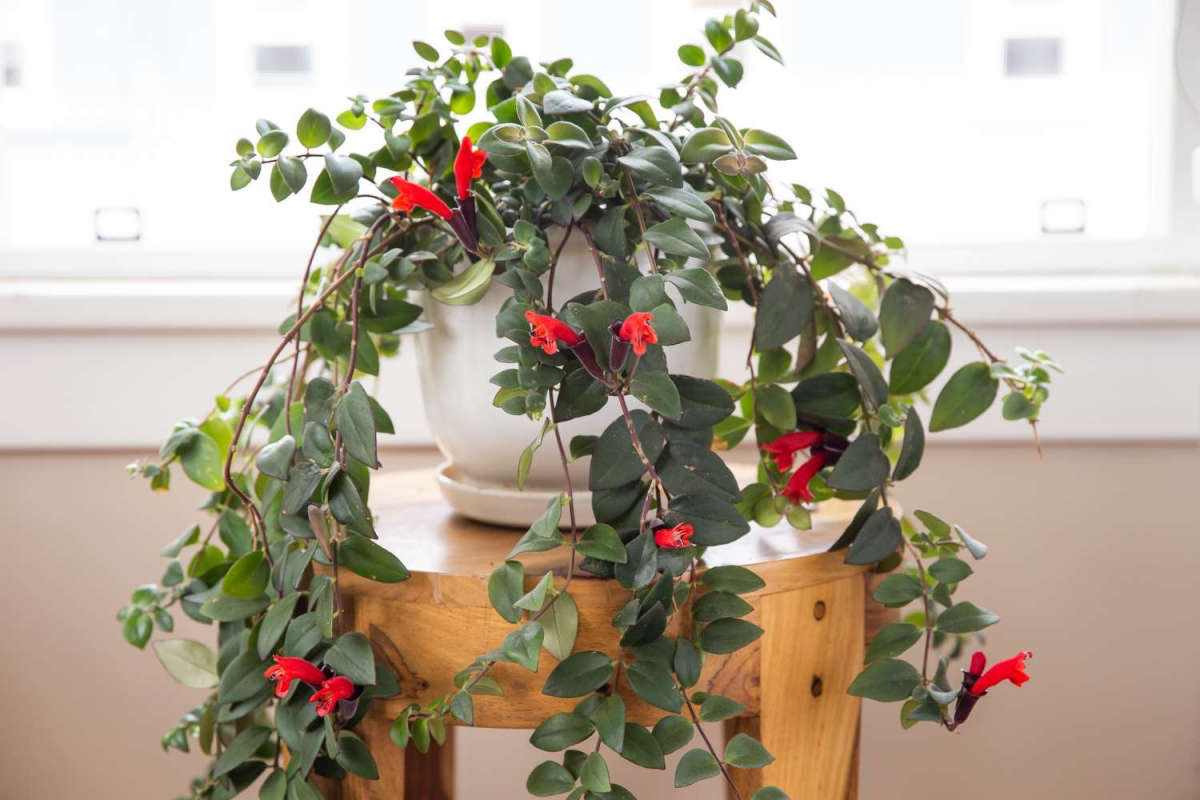
The right fertilizer can be the final push your plant needs to bloom. During the growing season (spring and summer), feed it every two to four weeks.
- Look for a balanced liquid fertilizer, like a 10-10-10, diluted to half-strength.
- Alternatively, a fertilizer slightly higher in phosphorus (the middle number) can specifically encourage flowering. Dyna-Gro’s ‘Bloom’ 3-12-6 is an excellent choice for this.
Always water the plant before fertilizing to avoid burning the roots.
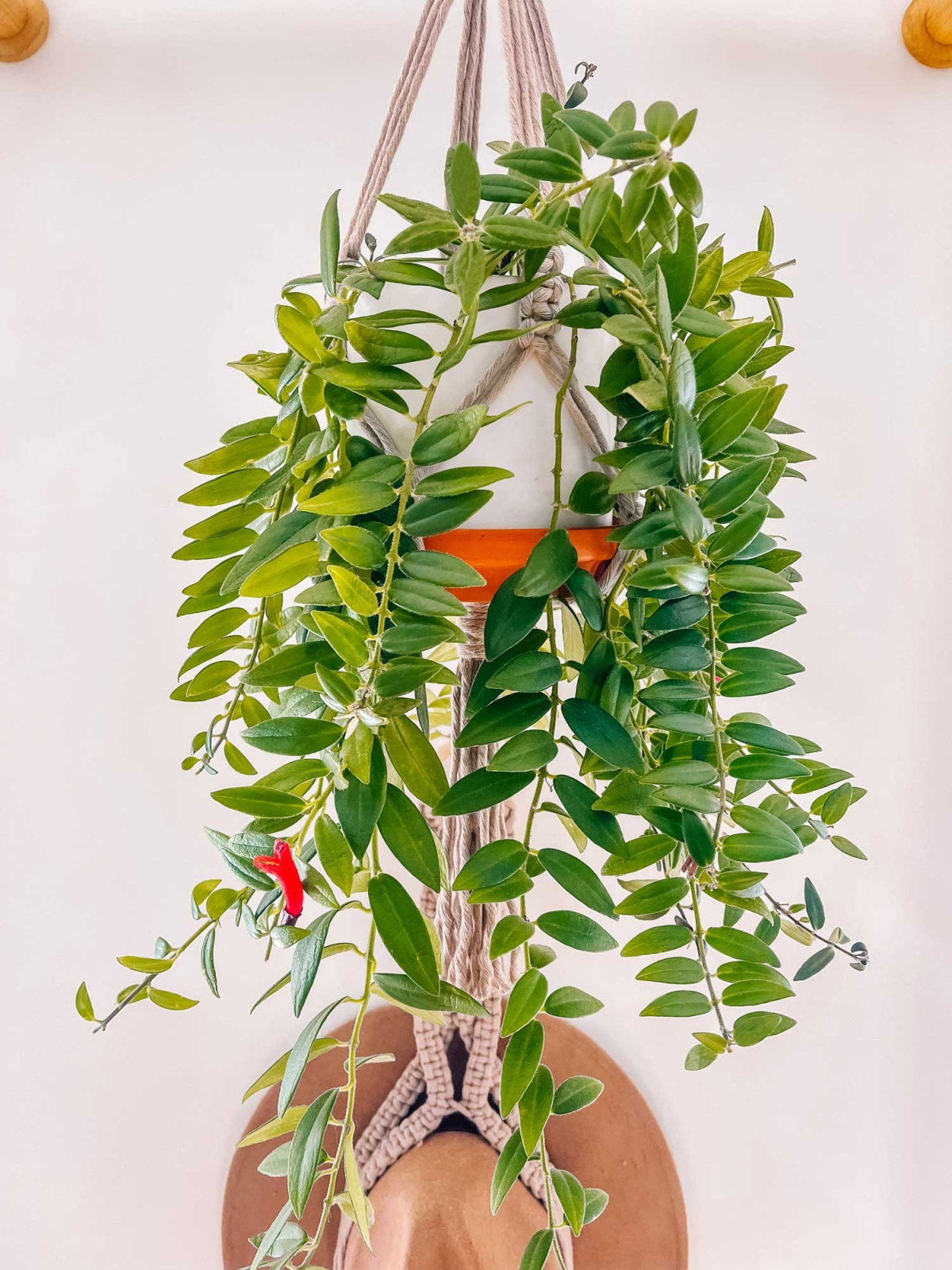
Standard Ceramic Pot: A classic choice, but ensure it has excellent drainage. Its non-porous nature means the soil will retain moisture longer, so be extra careful not to overwater.
Terracotta Pot: The porous clay allows air and water to move through the sides, which helps the soil to dry out faster. This is a great safety net for those who tend to overwater and mimics the airy environment of an epiphyte’s roots.
For a lipstick plant, terracotta is often the safer and healthier option.
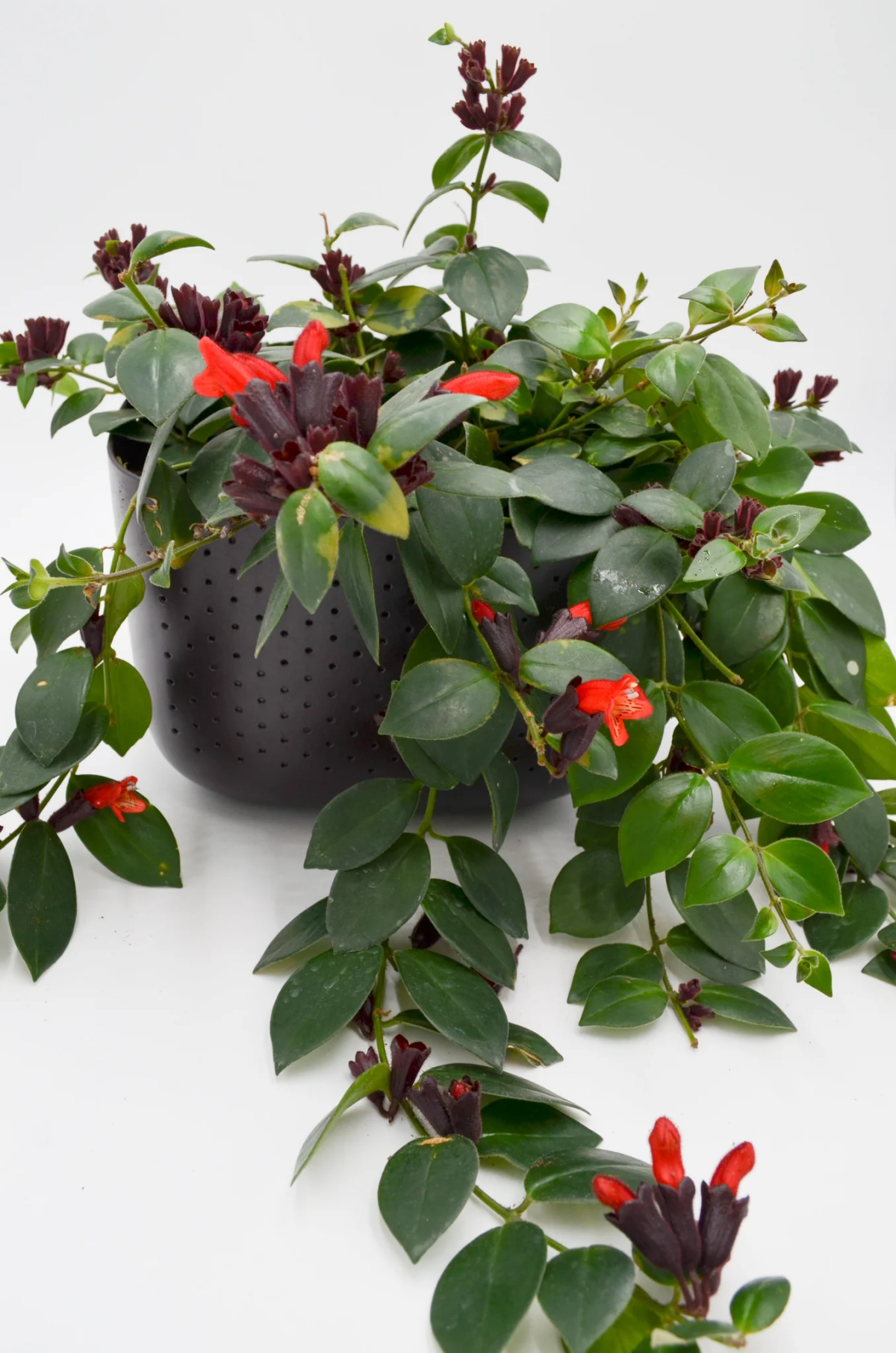
The Lipstick Plant belongs to the Gesneriad family, making it a close cousin to African Violets and Gloxinias.
This family connection is a huge clue to its care. Like African Violets, it dislikes having cold water on its leaves, prefers high humidity, and thrives in bright, indirect light. If you’ve had success with African Violets, you already have a head start in understanding your lipstick plant’s needs.
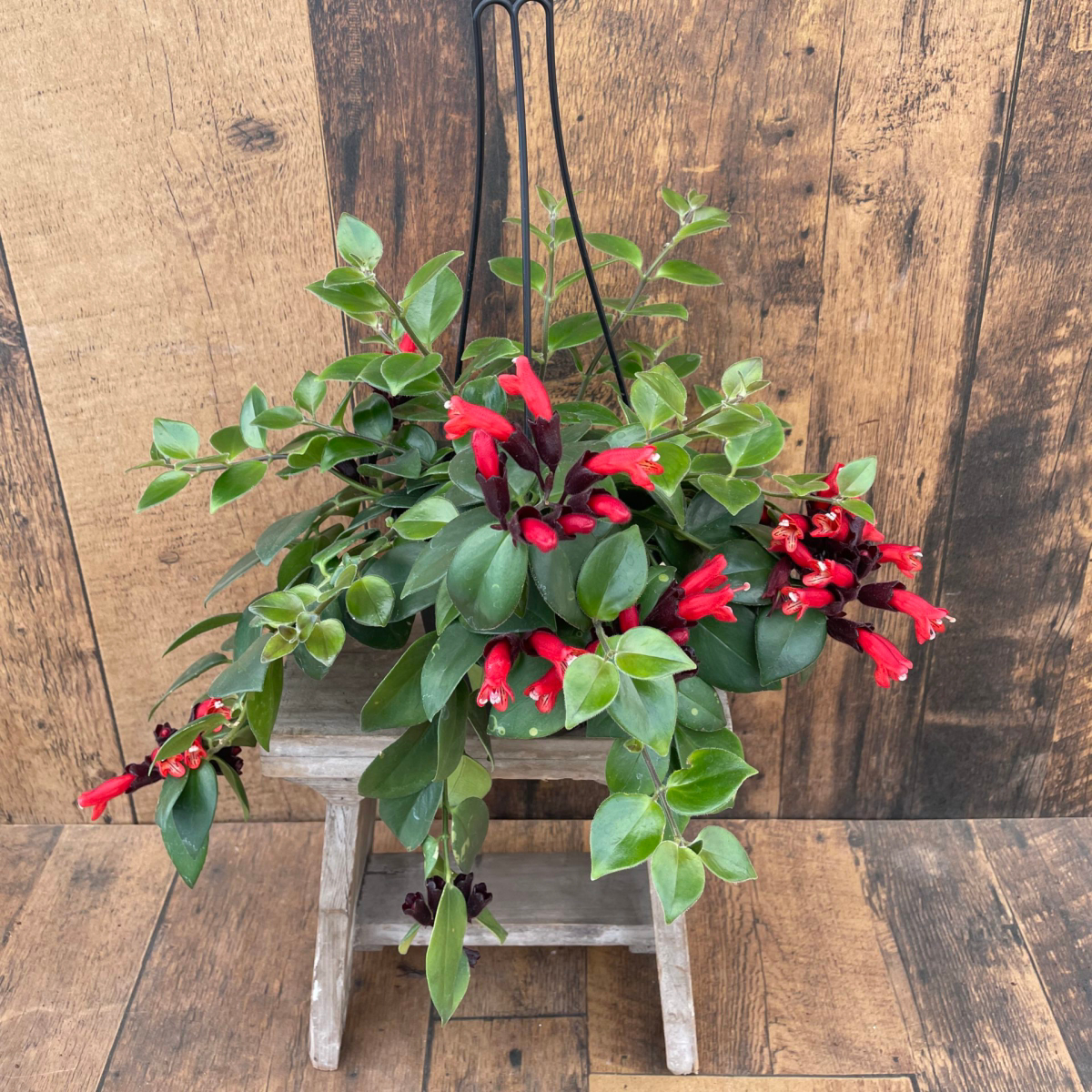
Think beyond the windowsill. The cascading nature of a lipstick plant is a designer’s dream for adding vertical interest and a touch of jungle-like wildness. It’s stunning in a macrame hanger by a bright window, trailing down from a high bookshelf, or even placed in a stylish pot on a plant stand where its stems can drape freely. The goal is to give it space to show off its natural, elegant arch.
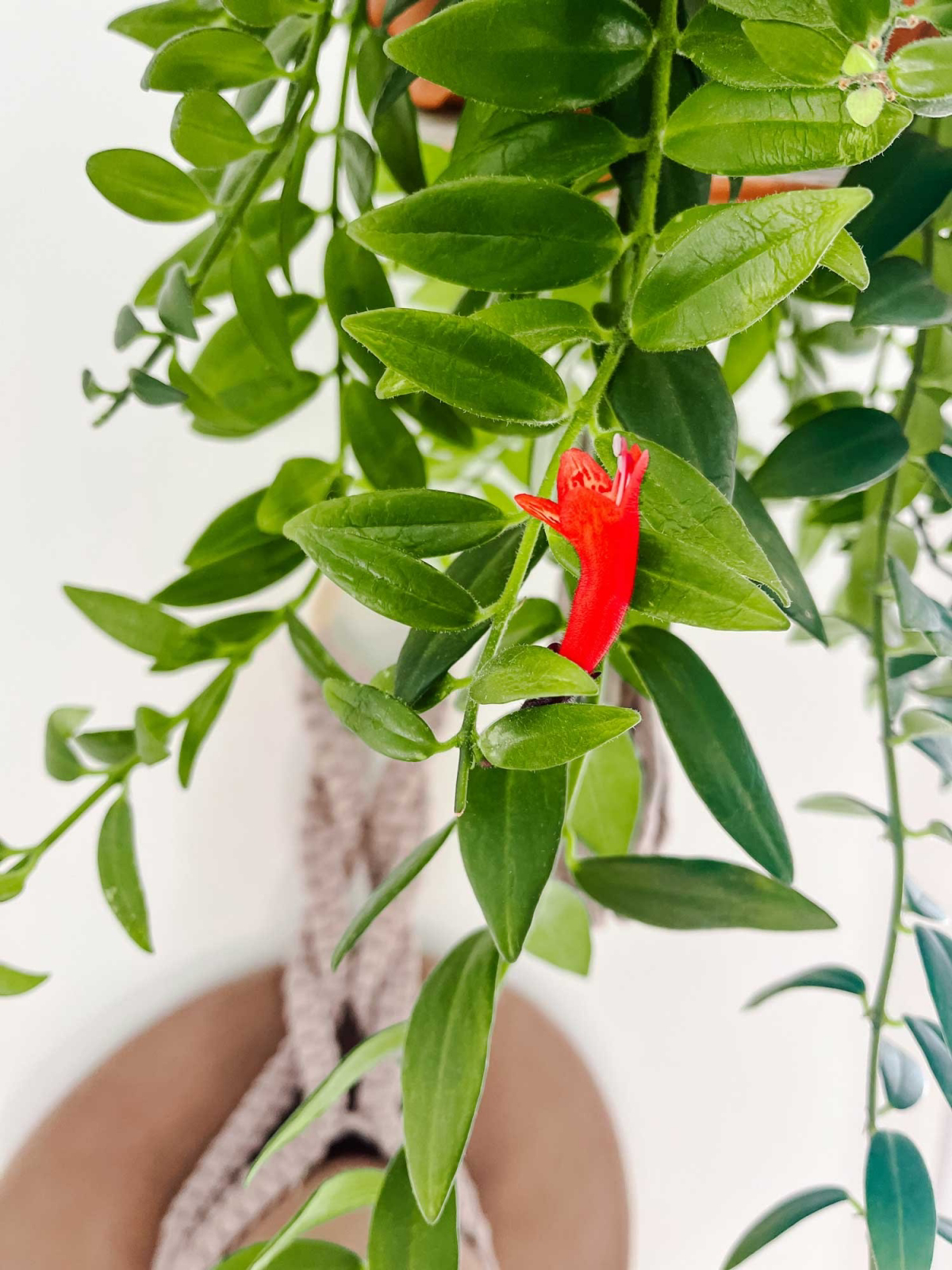
Recreate a gentle rainforest shower to make your plant truly happy. Once a month, take it to the sink or shower and give it a lukewarm rinse, washing the leaves and soaking the soil. This not only provides a thorough watering but also cleans dust off the leaves, improving their ability to photosynthesize, and helps wash away any potential pests.
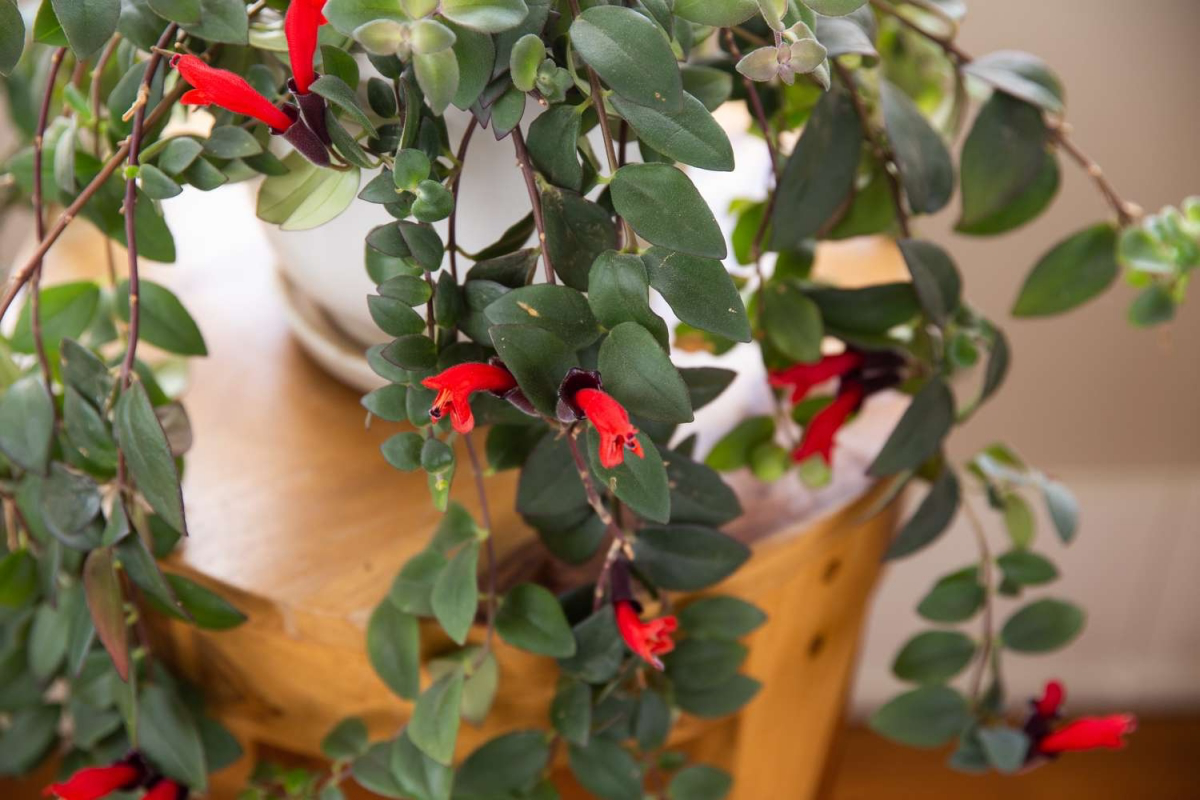
Why is my plant growing long, bare stems with leaves only at the tips?
This phenomenon, known as ‘legginess,’ is a clear signal your plant is stretching for more light. The long, leafless sections are the plant’s desperate attempt to reach a brighter spot. Move it closer to a window with filtered, bright light (an east-facing window is often perfect) and prune back the leggy stems to encourage bushier, healthier growth closer to the base.
A Common Pitfall: Choosing a pot that is too large. It seems generous, but a cavernous pot holds excess soil that stays wet for too long, creating a perfect storm for the root rot this plant dreads. Lipstick plants prefer to be slightly root-bound. When you do repot (only every 2-3 years), choose a new pot that is only 1-2 inches wider in diameter than the previous one.










